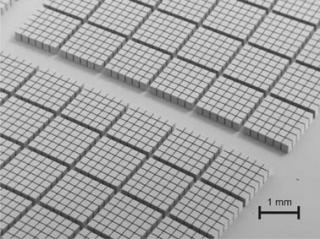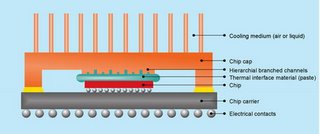

Using a technique based on the human circulatory system, IBM researchers today presented an approach for improving the cooling of computer chips.
Delivered at the BroadGroup Power and Cooling Summit in London, IBM researchers discussed the technique, called a “high thermal conductivity interface technology,” that they claim allows a twofold improvement in heat removal over current methods.
The technique is one of several being explored by scientists from the IBM Zurich Research Laboratory to address the problem of excessive heat brought on as performance continues to progress according to Moore’s Law.
“Electronic products are capable of amazing things, largely because of the more powerful chips at their heart, said Bruno Michel, manager of the Advanced Thermal Packaging research group at IBM’s Zurich lab, in a statement this morning. “We want to help electronics makers keep the innovations coming. Our chip-cooling technology is just one tool at our disposal to help them do that.
The approach used by IBM addresses the connection point between the hot chip and the various cooling components used to draw the heat away, including heat sinks. Currently, special particle-filled viscous pastes are typically applied to this interface to guarantee that chips can expand and contract with the thermal cycling. This paste is kept as thin as possible in order to transport heat from chip to the cooling components efficiently. However, IBM warned, squeezing these pastes too thin between the cooling components and chip would damage or even crack the chip if the conventional technologies are used.
To alter that, IBM researchers developed a chip cap with a network of tree-like branched channels on its surface. The pattern is designed such that when pressure is applied, the paste spreads much more evenly and the pressure remains uniform across the chip, allowing the right uniformity to be obtained with nearly two-times less pressure, and a 10-times better heat transport through the interface, according to IBM. IBM credited the design’s idea to biology, where systems of hierarchical channels can be found manifold in nature or the human circulatory system. --edn.com












No comments:
Post a Comment